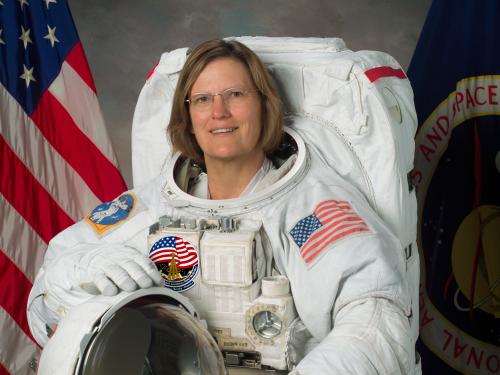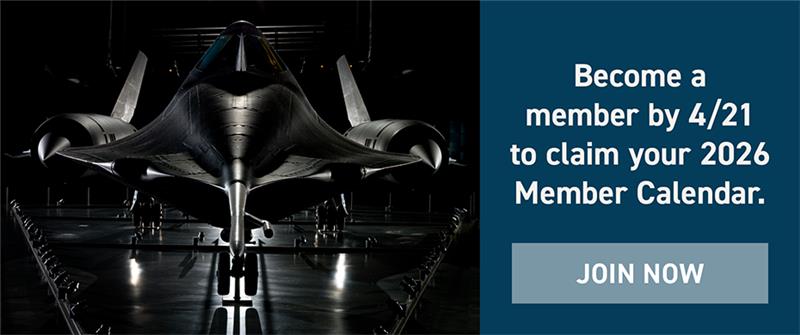
Stories of daring, stories of technological feats, stories of prevailing against the odds ... these are the stories we tell at the National Air and Space Museum. Dive in to the stories below to discover, learn, and be inspired.
Showing 51 - 60 of 78

October 11, 2014
On October 11, 1984, a female American astronaut stepped outside her spacecraft for the first time. Kathryn D. “Kathy” Sullivan had work to do in the payload bay of the Space Shuttle Challenger, a mobile workplace travelling 17,500 miles per hour about 140 miles above the Earth. Sullivan was one of the six women (in a class of 35) selected in 1978 to be Space Shuttle astronauts, and she was the third woman tapped to fly. An Earth scientist and PhD. geologist/oceanographer, mission specialist Sullivan was a good match for the STS-41G mission, which carried an Earth-observation payload and deployed the Earth Radiation Budget Satellite. She was co-investigator for the Shuttle Imaging Radar (SIR-B) remote sensing experiment and actively involved in research use of the Large Format Camera and other instruments mounted in the payload bay.

September 04, 2014
A veteran of four space shuttle flights, Steven Nagel first flew as a mission specialist on Discovery’s fifth trip into space before serving as pilot or commander on his subsequent flights. He was one of only a few astronauts to fly in all three roles.

August 30, 2014
Discovery entered service in 1984 as the third orbiter in the space shuttle fleet. Columbia and Challenger had already flown a total of 11 missions as America’s “space truck.” Discovery’s first mission, STS-41D, followed suit as the crew deployed, for the first time, three communications satellites, but it also signaled how the shuttle could serve as more than a delivery vehicle.

August 27, 2014
In 1984, Discovery ascended into space for the first time, after three thwarted launch attempts. Originally scheduled to lift off in June 1984, Discovery launched on August 30 as the twelfth space shuttle mission.

August 07, 2014
Henry “Hank” Hartsfield served as commander of the first mission of Space Shuttle Discovery, now on display at the Museum’s Steven F. Udvar-Hazy Center.

June 07, 2014
What was it like to witness a Space Shuttle launch or landing? For the Moving Beyond Earth (MBE) exhibition about the Space Shuttle, the International Space Station, and future human spaceflight, the team wanted to show how shuttle launches and landings became cultural experiences, not just technological events. Thousands of people gathered, often after having traveled great distances to do so. Many took pictures to record their presence at these historic events. What story would those snapshots tell?

April 23, 2014
Soon after the Hubble Space Telescope was launched in 1990, images and data from its instruments revealed that its main mirror was optically flawed. It suffered from spherical aberration—not all portions of the mirror focused to the same point. The mirror’s shape was off by less than 1/50th the thickness of a human hair, but this tiny flaw proved devastating to the quality of the Hubble’s images and to the efficiency of all of its instruments.

March 13, 2014
Dale Gardner was one of only six Space Shuttle astronauts to fly the Manned Maneuvering Unit (MMU) propulsion backpack.

August 29, 2013
Widely known as a test pilot extraordinaire, C. Gordon Fullerton fulfilled three distinguished careers centered on aeronautics and spaceflight. He spent 30 years in the U.S. Air Force (1958–1988), retiring with the rank of colonel after serving as a bomber pilot, fighter pilot, and test pilot. During 20 of those years, he was an astronaut in the Apollo, Skylab, and Space Shuttle programs (1966–1986). Then, for more than 20 years, he was a flight research pilot and chief pilot at the NASA Dryden Flight Research Center (1986–2007).

June 18, 2013
Sally Ride became the first American woman in space in June 1983. Ride’s presence on Space Shuttle Challenger was a ride into history, for it broke the gender barrier in the United States human spaceflight program.
